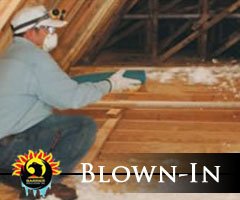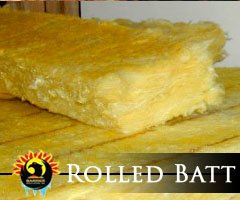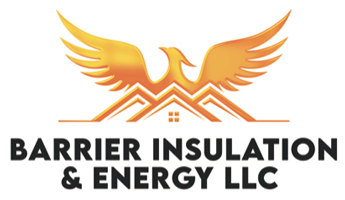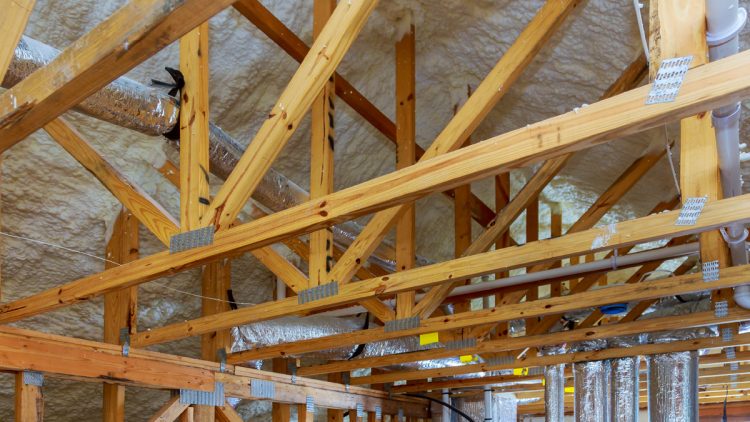What Is The Best Roof Insulation?
If you’re searching “Attic Insulation” in Phoenix, we can help. Barrier Insulation offers the best attic insulation in Phoenix! Our team knows how to insulate attics the right way for your home. We install the best insulation for Arizona and proudly serve every city in the Phoenix Valley including: Phoenix, Mesa, Chandler, Scottsdale, Glendale, Gilbert, Tempe and more.
Barrier Insulation offers the best attic insulation service in the Phoenix Valley. We offer all the different types of attic insulation to fit every demand and every budget. Insulating the attic is one of the most important areas of the home to insulate to reduce dependency on air conditioning and heating. Read more about the types of attic insulation we offer.
Blown-In Attic Insulation
 One of the better choices is blown in attic insulation. It is installed by techs that have a large hose and shoot the insulation into the attic. They have training to create an even, uniformly deep layer of insulation. This is done by using a large air driven machine that churns up the material into chunks and then blows them up the hose and into the attic.
One of the better choices is blown in attic insulation. It is installed by techs that have a large hose and shoot the insulation into the attic. They have training to create an even, uniformly deep layer of insulation. This is done by using a large air driven machine that churns up the material into chunks and then blows them up the hose and into the attic.
For blown material you have two main choices. There is cellulose and fiberglass blown in material. Both have advantages and disadvantages. With similar R values they both insulate well and are approximately 3 -4 R per inch. Fiberglass insulation is produced primarily from old glass or sand. Cellulose blown in insulation is made from recycled newspapers.
Depending on your application blown in insulation might be your only insulator in your attic, or you might use it in conjunction with other insulators to get the best energy efficiency. Blown in attic insulation sits on the floor of your attic as an even layer and helps keep your home cool in the summer and warm in the winter.
Batt Attic Insulation
 Batt attic insulation is pretty straight forward to install as it is rolls of material typically lined with a paper backing. They are made from interweaving fibers that are long and have adhesive qualities. This means they stick to each other and stick together as a grouping. Batt insulation is made from two source materials, cotton and fiberglass. Cotton batts are made from recycled denim jeans. Fiberglass batts are typically made from sand or recycled glass that is processed into the insulating strands and fibers.
Batt attic insulation is pretty straight forward to install as it is rolls of material typically lined with a paper backing. They are made from interweaving fibers that are long and have adhesive qualities. This means they stick to each other and stick together as a grouping. Batt insulation is made from two source materials, cotton and fiberglass. Cotton batts are made from recycled denim jeans. Fiberglass batts are typically made from sand or recycled glass that is processed into the insulating strands and fibers.
To install the batts they must be cut to fit each and every space they will be installed in. Even with the best of intentions there are tricky spots around corners, pipes, wires, junction boxes and other areas that end up having gaps. This means there are areas that simply are not insulated as well as other insulation options.
Spray Foam Attic Insulation
 One of the most energy efficient types of attic insulation is spray foam. It comes in two types that have pros and cons. There is open and closed cell spray insulation. A larger percentage of homes were built with the HVAC and duct system in the attic of the home. This means that if your insulation is sitting on the floor of your attic, your system is having to work harder. Moving the “envelope”, or area of your home that is climate controlled, to the roofline can greatly increase your energy efficiency. Spray foam allows this envelop to be at the roofline, and helps fill in all the areas that batt insulation can struggle with.
One of the most energy efficient types of attic insulation is spray foam. It comes in two types that have pros and cons. There is open and closed cell spray insulation. A larger percentage of homes were built with the HVAC and duct system in the attic of the home. This means that if your insulation is sitting on the floor of your attic, your system is having to work harder. Moving the “envelope”, or area of your home that is climate controlled, to the roofline can greatly increase your energy efficiency. Spray foam allows this envelop to be at the roofline, and helps fill in all the areas that batt insulation can struggle with.
Highly trained and skilled insulation technicians can spray the foam so there are no gaps or voids in the layer of insulation covering the attic ceiling. This means that the ducts carrying your hot and cold air to heat and cool your home are working in a more moderate climate. That translates into less energy being used to keep your home comfortable all year long.
Radiant Barrier Attic Insulation
Radiant barrier insulation provides an additional layer of protection to keep your attic and home more comfortable, and use less air conditioning and heating. This type of insulation has the same goal of preventing heat from entering homes as traditional insulation but achieves the goal in a different way. Instead of using thick layers of foam, loose insulation, or fiberglass batts it reflects the energy and heat with highly reflective surfaces.
It can be installed as a foil backed insulation board or it can be installed by spraying a highly reflective product onto the bottom of the roof decking in the attic. Barrier insulation installs R-Max radiant barrier and HeatBloc Ultra spray radiant barrier.
The Best Roof Insulation
Clearly the best roof insulation really depends on your home and your needs. If you don’t have any ducts or HVAC system in your attic and you don’t plan to finish or use the attic space, you might consider one of the less costly insulation types. However if you have ducts in your attic and want to keep your home as energy efficient as possible using spray foam might be a more costly, but better long term investment. Having local attic insulation experts come to your home and help you develop an effective and budget friendly insulation plan for your home is the only way to get the best attic insulation for you individual needs.
No matter which type of roof insulation you choose, it is important to have it installed properly by a qualified contractor. This will ensure that the insulation is effective and will last for many years.
Here are some additional factors to consider when choosing roof insulation:
- R-value: The R-value is a measure of how well an insulation material resists heat flow. The higher the R-value, the better the insulation.
- Air sealing: In addition to insulation, it is also important to air seal your roof. This will help to prevent air infiltration, which can contribute to heat loss.
- Budget: Roof insulation can range in price from a few hundred dollars to several thousand dollars. It is important to factor in the cost of installation when choosing an insulation material.
What Is R-Value?
R-value is a measure of how well a material resists heat flow. It is measured in units of per inch of thickness. The higher the R-value, the better the insulation.
For example, one inch of fiberglass insulation has an R-value of about R13. This means that it will resist heat flow 13 times better than one inch of air.
The R-value of an insulation material depends on a number of factors, including the type of material, the thickness of the material, and the density of the material.
In general, materials with low thermal conductivity have higher R-values. Thermal conductivity is a measure of how well a material conducts heat. Materials with low thermal conductivity are good insulators.
Some common insulation materials with high R-values include:
- Fiberglass insulation: R-13 to R-30
- Rockwool insulation: R-19 to R-49
- Cellulose insulation: R-3.5 to R-38
- Spray foam insulation: R-6 to R-60
The R-value of an insulation material is important because it can help to reduce heat loss and save energy. Insulating your home can help you to lower your heating and cooling bills, and it can also make your home more comfortable.
When choosing insulation for your home, it is important to consider the climate you live in, the type of insulation material you prefer, and your budget. You should also consult with a qualified contractor to ensure that the insulation is installed properly.
New Kinds of Insulation
- Aerogel: Aerogel is a solid form of air with extremely low density and high R-value. It is made from a gel that has been dehydrated to remove almost all of the liquid. Aerogel is very expensive, but it is also very effective at insulating.
- Phase change materials (PCMs): PCMs are materials that can absorb and release heat without changing their state. They are used in thermal storage applications, such as in solar thermal collectors and building insulation. PCMs can help to reduce energy consumption by storing heat during the day and releasing it at night.
- Mycelium insulation: Mycelium is the root-like structure of fungi. It can be used to create a lightweight, fire-resistant insulation material. Mycelium insulation is still in the development stage, but it has the potential to be a more sustainable and eco-friendly alternative to traditional insulation materials.
- Nanofiber insulation: Nanofiber insulation is made from tiny fibers that have a very high surface area. This makes it very effective at trapping air, which is a good insulator. Nanofiber insulation is still in the development stage, but it has the potential to be a very efficient and lightweight insulation material.
- Biomass insulation: Biomass insulation is made from plant materials, such as wood chips, straw, and sawdust. It is a sustainable and renewable insulation material. Biomass insulation is not as effective as some other types of insulation, but it is a good option for those who are looking for an eco-friendly alternative.
These are just a few of the new types of insulation that are being developed. As technology advances, we can expect to see even more innovative insulation materials in the future.
Barrier Insulation Offers Free Attic Insulation Quotes in Phoenix
Barrier Insulation Inc. is the premier provider of quality insulation in Phoenix. You can trust your insulation to the professionals at Barrier Insulation Inc. knowing your house will be optimized with the finest quality insulation in the marketplace. For all of your insulation needs call us today at 602-499-2922.
Whether you are building a new house, or just need to remove the old insulation and install a newer more energy efficient option Barrier Insulation is Phoenix’s first choice in home and commercial insulation. We proudly provide the valley’s more comprehensive insulation service that helps you stay more comfortable and save on energy. Click here to schedule on our website, or just give us a call at 602-499-2922.

